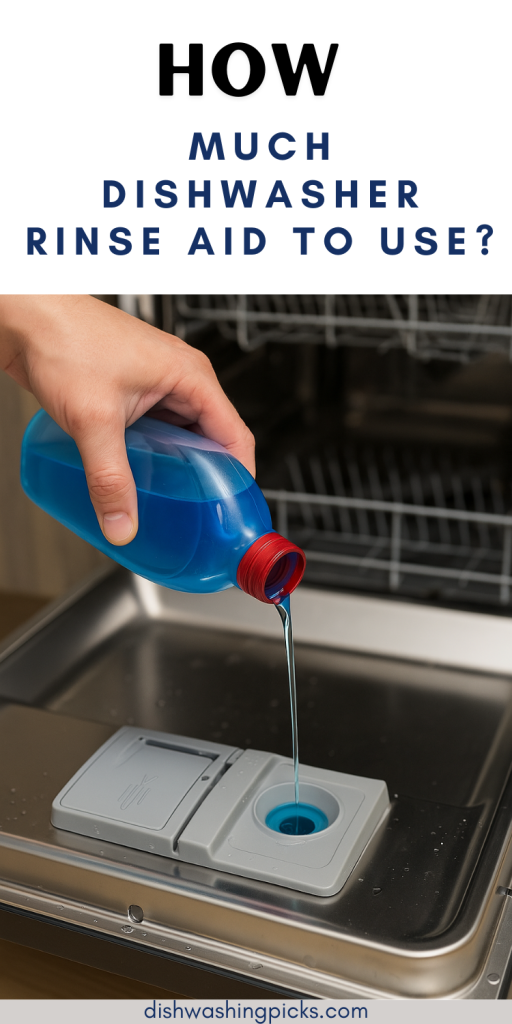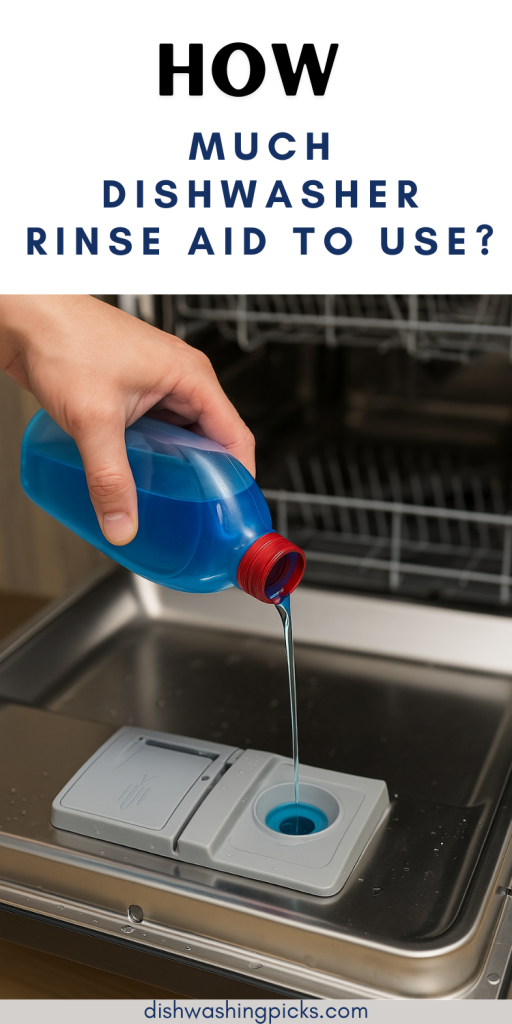
First, let’s talk about dishwasher rinse aid. It’s one of those things that’s super easy to overlook until your dishes come out all spotty and streaky. If you’ve ever wondered, “How much rinse aid do I actually need to use?” or “Am I using too much?”—well, you’re in the right place. I’ve got you covered!
What Exactly is Dishwasher Rinse Aid Anyway?
First things first—let’s just quickly go over what rinse aid actually does. You know that fresh, shiny, streak-free look your dishes have after a good wash? That’s rinse aid working its magic. It helps water slide off your dishes more efficiently, preventing those annoying water spots and streaks. Essentially, it’s like giving your dishes a quick spa treatment after they’ve been through the dishwasher. Pretty sweet, right?
But here’s the thing: rinse aid isn’t just some random bottle you add to the mix. It actually does some pretty important work in ensuring your dishes dry properly and look their best. So, knowing how much to use is key.
How Much Rinse Aid Should You Use?
Now, here’s the million-dollar question: How much rinse aid do you really need to add? Well, it’s not a one-size-fits-all kind of deal, but there’s a general rule of thumb.
Dishwashers typically have a compartment specifically for rinse aid. It’s usually marked clearly, and you can fill it up using the cap or the little measuring tool that comes with the bottle. Most dishwashers have a “fill line” for a reason. If you fill it too high, you risk wasting the stuff, and too little? Well, your dishes might not get that shiny finish you’re hoping for.
Generally speaking, filling the rinse aid compartment about halfway to the fill line is a good start. For most loads, this amount should be enough. But if you’re noticing some spots or streaks, you can try adding a bit more. It’s all about finding that sweet spot.
What If You’re Using More Rinse Aid than Recommended?
Okay, so we’ve talked about the basics, but what happens if you’re a bit extra with the rinse aid? Maybe you think more is better (it’s tempting, I know). Well, in this case, more isn’t necessarily better. Too much rinse aid can actually lead to residue building up on your dishes. So, even though that extra splash might feel like a good idea, it’s not always the solution.
And here’s another thing—if you’re using the rinse aid compartment too often, you might need to check the water hardness in your area. Hard water can cause a lot of mineral buildup, so you might need to adjust how much rinse aid you use depending on how “hard” your tap water is.
What If You Don’t Have a Rinse Aid Dispenser?
Now, maybe you don’t even have a rinse aid dispenser. What then? Well, don’t worry, you can still get the benefits of rinse aid. You can buy those little rinse aid boosters that go in the bottom of the dishwasher, or use those “2-in-1” pods that have the rinse aid already built in. They’re super convenient if you don’t want to deal with the extra step of filling up a dispenser every time.
A Little Goes a Long Way
So, to sum it up, how much rinse aid you use really comes down to your dishwasher and how much water it’s dealing with. Start with a little, see how your dishes look, and adjust as needed. Remember, a little goes a long way—so don’t go overboard.
In the next section, we’ll dive into some real-life tips on how to make the most of your rinse aid and dishwasher settings for even better results. Stick around!

